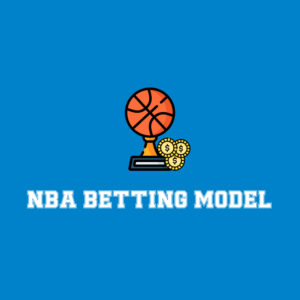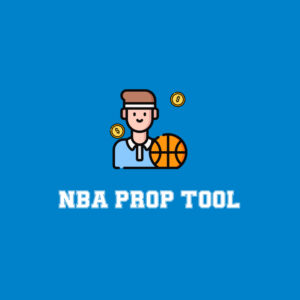
Take all your skill, your tactics, your teamwork and your strategy, put them in a box and throw them out the window. Sometimes, all you need to do to win a football game to just be physically more massive than the guys lining up on the other side of the ball. Just ask the Baltimore Ravens!
Every so often, we like to check in on something we call snap-weighted size, to measure which teams are sending the most mass out there on a play-by-play basis. You can get some of that from checking formation data and personnel groupings, but that won’t tell you the difference between the 6-foot-5 Mike Evans and the 5-foot-9 Zay Flowers, or the 247-pound Derrick Henry and the 188-pound De’Von Achane. Calculating snap-weighted height (SWH), snap-weighted weight (SWW) and snap-weighted BMI (SWBMI) gives us a better picture of the personnel philosophies each team has.
It should be noted that this is more of a descriptive stat than anything prescriptive. We have consistently found that height has almost no correlation with DVOA, even if you only look at wide receivers or cornerbacks in the passing game. It’s not that height doesn’t matter at all; it’s more that there’s so little variance in height that having an inch or two advantage over the other team gets lost among all the other nuances of playing the position. Weight does make more of an impact, but the correlations are still fairly low across the board. For instance, teams with bigger linemen, on either side of the ball, tend to be better in the run game and worse in the passing game, but there’s not a super-strong correlation between any of this and actual on-field success. If anything, the correlations were weaker in 2023 than they were in previous seasons.
There, however, lies where some interest may be found. Small offenses succeeded not because being small is beneficial on the whole, but because the Rams, Dolphins and 49ers were all in the bottom eight in SWW and the top eight in offensive DVOA. They weren’t good because they were small; they were good because the Shanahan/McVay system has historically liked more mobile linemen up front and speedy YAC guys out wide. And since that’s the offensive system that’s currently doing the best in the league, of course smaller offenses will turn out better. It’s the style that’s pushing the numbers, not vice versa. And these numbers tell us a great deal about each team’s style. Which teams are looking for those small, speedy receivers; which teams are looking to get the biggest and beefiest offensive linemen to establish the run. With the draft just days away, this might be useful information to decide if a team would prefer the taller, stockier Marvin Harrison or the smaller, lighter Malik Nabers and so on and so forth.
With that in mind, let’s drive into the numbers.
| Offensive Snap-Weighted Size, 2023 | ||||||
| Team | Height | Rk | Weight | Rk | BMI | Rk |
| NE | 75.1 | 13 | 268.5 | 1 | 33.3 | 2 |
| SEA | 74.9 | 21 | 266.5 | 2 | 33.2 | 3 |
| BAL | 74.4 | 31 | 266.4 | 3 | 33.5 | 1 |
| NYJ | 75.1 | 14 | 265.9 | 4 | 32.9 | 7 |
| CHI | 74.8 | 24 | 265.3 | 5 | 33.1 | 4 |
| BUF | 75.7 | 2 | 265.2 | 6 | 32.3 | 22 |
| CLE | 75.0 | 19 | 264.7 | 7 | 32.8 | 8 |
| PHI | 74.7 | 26 | 264.6 | 8 | 32.9 | 5 |
| CIN | 75.8 | 1 | 263.5 | 9 | 32.0 | 29 |
| KC | 75.1 | 12 | 263.3 | 10 | 32.6 | 13 |
| CAR | 74.9 | 22 | 262.7 | 11 | 32.7 | 9 |
| LAC | 75.3 | 7 | 262.5 | 12 | 32.4 | 19 |
| DEN | 75.0 | 18 | 262.1 | 13 | 32.6 | 12 |
| DAL | 74.9 | 23 | 261.8 | 14 | 32.5 | 14 |
| GB | 75.4 | 3 | 261.7 | 15 | 32.1 | 25 |
| PIT | 75.0 | 17 | 261.5 | 16 | 32.4 | 18 |
| Team | Height | Rk | Weight | Rk | BMI | Rk |
| NYG | 75.2 | 10 | 261.4 | 17 | 32.3 | 23 |
| DET | 75.3 | 6 | 261.4 | 18 | 32.1 | 26 |
| TEN | 75.1 | 15 | 261.1 | 19 | 32.4 | 17 |
| WAS | 75.0 | 20 | 261.0 | 20 | 32.4 | 20 |
| JAX | 75.4 | 5 | 261.0 | 21 | 32.1 | 28 |
| TB | 75.2 | 9 | 260.9 | 22 | 32.2 | 24 |
| IND | 75.3 | 8 | 260.8 | 23 | 32.1 | 27 |
| ATL | 75.1 | 11 | 260.8 | 24 | 32.3 | 21 |
| SF | 74.8 | 25 | 260.5 | 25 | 32.5 | 15 |
| LV | 74.6 | 29 | 260.1 | 26 | 32.6 | 10 |
| HOU | 74.7 | 28 | 260.1 | 27 | 32.6 | 11 |
| NO | 75.4 | 4 | 260.0 | 28 | 31.9 | 32 |
| ARI | 74.1 | 32 | 259.8 | 29 | 32.9 | 6 |
| MIA | 74.5 | 30 | 259.0 | 30 | 32.5 | 16 |
| LAR | 75.1 | 16 | 258.3 | 31 | 32.0 | 30 |
| MIN | 74.7 | 27 | 255.4 | 32 | 31.9 | 31 |
| AVG | 75.0 | 262.1 | 32.5 | |||
Let’s see here. The Vikings, Rams, Dolphins, Texans and 49ers, all in the bottom eight, all Shanahan/McVay systems? That all seems to check out. Really, it’s the zone-blocking scheme more than anything else pushing these numbers; linemen make up about 45% of the snaps, after all. Shanahan-style running teams have historically liked their light, fast offensive linemen, and that’s what’s being reflected here.
Interestingly, the McVay half of that grouping seems to be splitting away from the Shanahan half. Steve Avila was the first lineman the Rams drafted in the McVay era over 319 pounds, clocking in at 332. Zac Taylor’s Bengals have no issue starting the 345-pound Orlando Brown. It will be interesting to see if they diverge more over the next few years, or if this is just a product of the personnel available. As it stands, we’d advise linemen on teams with new Shanahan/McVay approved coordinators to get on the treadmill; we’re looking at you, Atlanta and New Orleans.
The Vikings were the lightest offense of all, ranking in the bottom three in linemen, quarterbacks and receivers; their running backs and tight ends were average and not nearly enough to lower the overall numbers. Four of Minnesota’s top five receivers clocked in under 200 pounds; K.J. Osborn tipped the scales at 203. They didn’t have a single offensive lineman over 320, and the only one to get even that big was Oli Udoh, who went on IR after Week 2. The Vikings have been small throughout Kevin O’Connell’s tenure, but 2023 took it to a new level.
The shortest offense belonged to Arizona; that sounds like a Kyler Murray joke but is mostly just a factor of being unable to completely clear out the remnants of Kliff Kingsbury in one year. When you’re running not one but two 5-foot-7 receivers in Rondale Moore and Greg Dortch, you’re going to have a hard time measuring up. 6-foot-2 rookie Michael Wilson at least gave them one receiver who could safely ride most roller coasters by himself, and Marvin Harrison is 6-foot-4. I wouldn’t expect Arizona to remain the shortest for long.
On the other end of the scales, the Patriots clocked in with top-quartile weights on the offensive line, at running back and at wide receiver – 350+-pounders on the line in Mike Onwenu and Trent Brown, no running back under 225, and plenty of snaps for 215-pound DeVante Parker and JuJu Smith-Schuster at wideout. That typically is the makeup of a team that knows it wants to run a lot. Sizes at those three positions are all correlated with higher run rates. Instead, New England finished roughly in the middle of the pack in early-down pass frequency. That is not, in and of itself, a sign that something was broken in New England’s offense last year, but, well, throw it onto the pile of data points.
Cincinnati ends up with the tallest offense thanks to top-five finishes from the offensive line and wide receivers. The Bengals only rostered one receiver under six feet tall; the 6-foot-1 Ja’Marr Chase was the shortest of the wideouts Cincinnati actually used. It’s hard to believe they play the same sport as the Cardinals wideouts. Meanwhile, 6-foot-4 Ted Karras was the shortest member of the line, and this is a team that just added 6-foot-8 Trent Brown to go alongside 6-foot-8 Orlando Brown. Yikes.
But it’s the Ravens who might be the most impressive, size-wise here, and we have to go to the positional table to really explain just why.
| Offensive Snap-Weighted Weight, 2023 | ||||||||||
| Team | QB | Rk | RB | Rk | WR | Rk | TE | Rk | OL | Rk |
| ARI | 211.9 | 29 | 223.9 | 6 | 189.7 | 31 | 248.6 | 17 | 315.4 | 16 |
| ATL | 207.7 | 31 | 219.9 | 13 | 202.1 | 13 | 248.3 | 18 | 309.5 | 29 |
| BAL | 214.1 | 27 | 240.0 | 1 | 194.0 | 26 | 246.4 | 25 | 324.7 | 1 |
| BUF | 236.1 | 2 | 208.7 | 30 | 202.2 | 12 | 246.6 | 23 | 319.8 | 9 |
| CAR | 205.1 | 32 | 209.1 | 27 | 204.3 | 7 | 249.7 | 13 | 321.5 | 5 |
| CHI | 224.0 | 7 | 223.0 | 9 | 196.4 | 23 | 256.9 | 4 | 320.1 | 8 |
| CIN | 212.5 | 28 | 217.3 | 18 | 205.5 | 4 | 247.1 | 20 | 318.5 | 11 |
| CLE | 220.3 | 14 | 213.2 | 21 | 200.9 | 17 | 241.8 | 31 | 321.1 | 6 |
| DAL | 237.2 | 1 | 212.0 | 24 | 194.0 | 27 | 246.1 | 27 | 317.1 | 13 |
| DEN | 215.0 | 26 | 223.6 | 7 | 203.7 | 9 | 248.8 | 16 | 312.1 | 23 |
| DET | 217.0 | 23 | 211.7 | 26 | 193.7 | 28 | 246.6 | 24 | 318.6 | 10 |
| GB | 219.0 | 17 | 227.9 | 3 | 201.0 | 16 | 253.1 | 7 | 311.2 | 26 |
| HOU | 217.1 | 22 | 217.9 | 16 | 197.7 | 19 | 246.3 | 26 | 314.4 | 18 |
| IND | 227.9 | 4 | 213.3 | 20 | 203.0 | 10 | 253.5 | 6 | 310.5 | 27 |
| JAX | 219.6 | 16 | 213.6 | 19 | 198.7 | 18 | 243.8 | 29 | 315.1 | 17 |
| KC | 225.7 | 6 | 212.5 | 23 | 202.7 | 11 | 246.6 | 22 | 316.7 | 14 |
| Team | QB | Rk | RB | Rk | WR | Rk | TE | Rk | OL | Rk |
| LAC | 232.7 | 3 | 205.6 | 31 | 208.5 | 2 | 241.6 | 32 | 313.7 | 21 |
| LAR | 219.8 | 15 | 204.2 | 32 | 197.7 | 22 | 252.5 | 8 | 313.7 | 20 |
| LV | 215.0 | 25 | 222.8 | 10 | 201.3 | 15 | 259.4 | 2 | 308.0 | 31 |
| MIA | 226.5 | 5 | 209.0 | 28 | 191.1 | 30 | 247.4 | 19 | 316.0 | 15 |
| MIN | 209.3 | 30 | 218.5 | 14 | 188.9 | 32 | 249.2 | 14 | 308.7 | 30 |
| NE | 217.9 | 19 | 225.9 | 4 | 203.8 | 8 | 250.7 | 11 | 324.5 | 2 |
| NO | 217.5 | 21 | 221.6 | 11 | 196.0 | 24 | 243.7 | 30 | 312.6 | 22 |
| NYG | 218.3 | 18 | 220.7 | 12 | 193.6 | 29 | 245.3 | 28 | 318.3 | 12 |
| NYJ | 217.6 | 20 | 218.4 | 15 | 201.5 | 14 | 255.6 | 5 | 321.7 | 4 |
| PHI | 223.0 | 9 | 208.8 | 29 | 197.7 | 20 | 251.9 | 10 | 323.9 | 3 |
| PIT | 222.8 | 10 | 229.2 | 2 | 197.7 | 21 | 259.7 | 1 | 311.8 | 25 |
| SEA | 222.0 | 11 | 212.7 | 22 | 205.3 | 5 | 258.6 | 3 | 320.2 | 7 |
| SF | 220.6 | 13 | 217.7 | 17 | 204.7 | 6 | 246.7 | 21 | 310.0 | 28 |
| TB | 215.1 | 24 | 211.9 | 25 | 205.9 | 3 | 250.7 | 12 | 311.9 | 24 |
| TEN | 223.1 | 8 | 223.3 | 8 | 211.8 | 1 | 249.0 | 15 | 304.1 | 32 |
| WAS | 220.6 | 12 | 225.0 | 5 | 195.4 | 25 | 252.2 | 9 | 314.2 | 19 |
| AVG | 219.7 | 217.6 | 199.7 | 249.5 | 315.6 | |||||
The heftiest offensive line in the league and the heaviest running back room in the league. Might the Baltimore Ravens be a team designed to run the ball down your throat early and often? You know, it’s certainly conceivable. The Ravens do not roster a lineman under 300 pounds, started 330+-pounders John Simpson and Kevin Zeitler, and found at least 200 snaps for 370+-pounders Daniel Faalele and Ben Cleveland. The running back number includes fullback Patrick Ricard, so it’s a little biased, but Gus Edwards clocks in at 238. And now they added 247-pound Derrick Henry, the heaviest running back who made an impact last season. The Ravens are replacing Simpson and Zeitler, but sliding Cleveland into one of those two slots will likely just make the Ravens’ line heavier. And don’t be surprised if Baltimore finds its way to drafting Christian Mahogany or Layden Robinson, just to bulk up that little bit more. Baltimore has been offensive line-centric in their philosophy since John Harbaugh took over, and they really value those big, physical maulers up front.
Other points of note from the offensive positions:
- Yes, at just 70.3 inches tall, Bryce Young and the Carolina Panthers took away the Cardinals’ crown of shortest quarterback room in the league. The Panthers will have the inside line on this title next year, as well, as Andy Dalton is shorter than Desmond Ridder. Meanwhile, while Joe Flacco was the tallest quarterback in the league, the rest of the Browns were nothing to write home about. Trevor Lawrence, the lankiest starting quarterback since Aaron Brooks, brought the title home to Jacksonville.
- If your quarterback has trouble seeing over your line, make sure your receivers tower over it. That may not have been the explicit strategy in Carolina, but at 74.2 inches, they led the league in receiver SWH. It’s not so much a matter of having anyone super-tall at the position, but all of their top four wideouts were at least 6-foot-2; they didn’t have a tiny slot guy or something eating up any snaps.
- There was only a 2.2-inch and 37.2-pound difference between the Titans’ wide receivers and tight ends, making them the team with the least physical difference between the two positions. Just to put that in perspective, the average tight end is four inches and 50 pounds larger than the average wide receiver, so the Titans just about halved that. That gap might increase a little bit with 190-pound Calvin Ridley entering the starting lineup, but the 6-foot-2, 225-pound Treylon Burks and the 6-foot-3, 238-pound Chigoziem Okonowo are basically rounding errors from one another despite playing different positions.
- The Titans also had the lightest and third-shortest offensive line in football. Derrick Henry is going to have a sea change running behind Baltimore’s giants.
- There has often been a link between small, light running backs and passes to them, but that correlation was basically zero in 2023. Small running back rooms for the Rams, Bills, Eagles and Chargers all failed to rack up even 100 targets; the Rams had the fewest running back targets in the league despite 195-pound Kylen Williams and Ronnie Rivers eating up two thirds of the running back snaps.
We’ll take a look at defense, special teams, and total numbers tomorrow.

































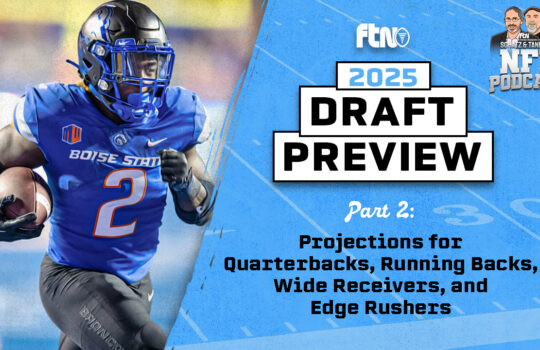

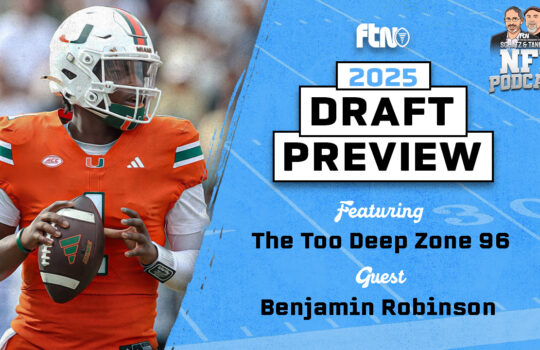



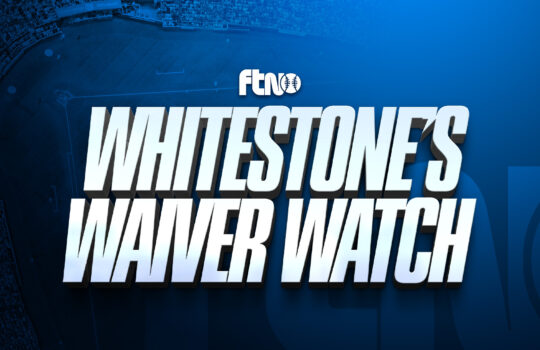



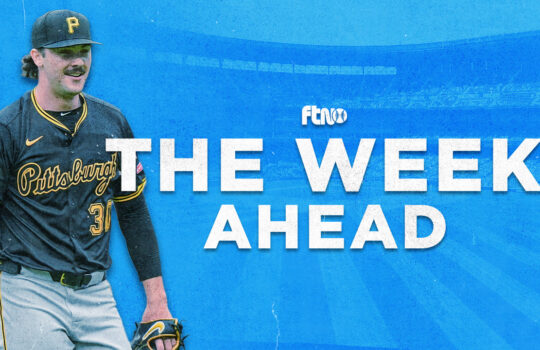

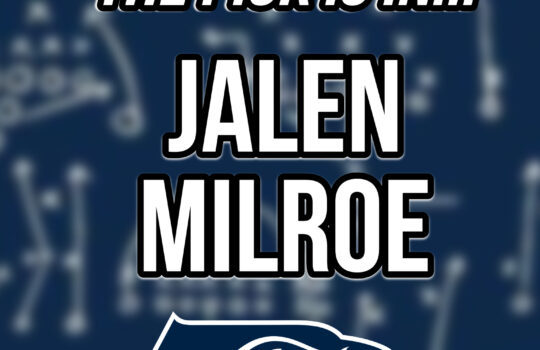

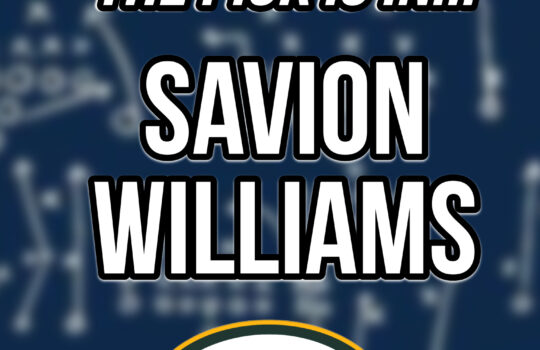
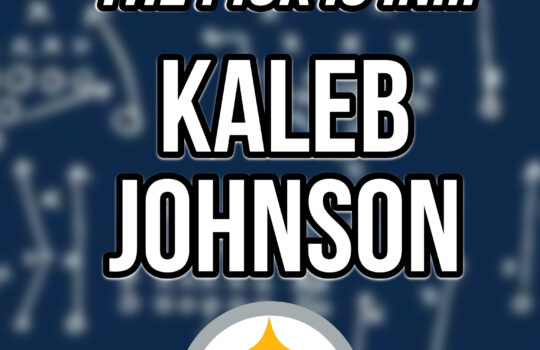

 New York Jets
New York Jets  New England Patriots
New England Patriots  Miami Dolphins
Miami Dolphins  Buffalo Bills
Buffalo Bills  Pittsburgh Steelers
Pittsburgh Steelers  Cleveland Browns
Cleveland Browns  Cincinnati Bengals
Cincinnati Bengals  Baltimore Ravens
Baltimore Ravens  Tennessee Titans
Tennessee Titans  Jacksonville Jaguars
Jacksonville Jaguars  Indianapolis Colts
Indianapolis Colts  Houston Texans
Houston Texans  Las Vegas Raiders
Las Vegas Raiders  Los Angeles Chargers
Los Angeles Chargers  Kansas City Chiefs
Kansas City Chiefs  Denver Broncos
Denver Broncos  Washington Commanders
Washington Commanders  Philadelphia Eagles
Philadelphia Eagles  New York Giants
New York Giants  Dallas Cowboys
Dallas Cowboys  Minnesota Vikings
Minnesota Vikings  Green Bay Packers
Green Bay Packers  Detroit Lions
Detroit Lions  Chicago Bears
Chicago Bears  Tampa Bay Buccaneers
Tampa Bay Buccaneers  New Orleans Saints
New Orleans Saints  Carolina Panthers
Carolina Panthers  Atlanta Falcons
Atlanta Falcons  San Francisco 49ers
San Francisco 49ers  Seattle Seahawks
Seattle Seahawks  Los Angeles Rams
Los Angeles Rams  Arizona Cardinals
Arizona Cardinals 
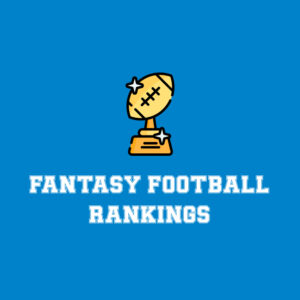
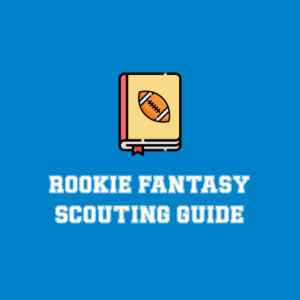





 Boston Celtics
Boston Celtics  Brooklyn Nets
Brooklyn Nets  Philadelphia 76ers
Philadelphia 76ers  New York Knicks
New York Knicks  Toronto Raptors
Toronto Raptors  Chicago Bulls
Chicago Bulls  Detroit Pistons
Detroit Pistons  Milwaukee Bucks
Milwaukee Bucks  Cleveland Cavaliers
Cleveland Cavaliers  Indiana Pacers
Indiana Pacers  Orlando Magic
Orlando Magic  Atlanta Hawks
Atlanta Hawks  Charlotte Hornets
Charlotte Hornets  Miami Heat
Miami Heat  Washington Wizards
Washington Wizards  Denver Nuggets
Denver Nuggets  Minnesota Timberwolves
Minnesota Timberwolves  Oklahoma City Thunder
Oklahoma City Thunder  Portland Trail Blazers
Portland Trail Blazers  Utah Jazz
Utah Jazz  LA Clippers
LA Clippers  Golden State Warriors
Golden State Warriors  Los Angeles Lakers
Los Angeles Lakers  Phoenix Suns
Phoenix Suns  Sacramento Kings
Sacramento Kings  Dallas Mavericks
Dallas Mavericks  Houston Rockets
Houston Rockets  Memphis Grizzlies
Memphis Grizzlies  New Orleans Pelicans
New Orleans Pelicans  San Antonio Spurs
San Antonio Spurs 
